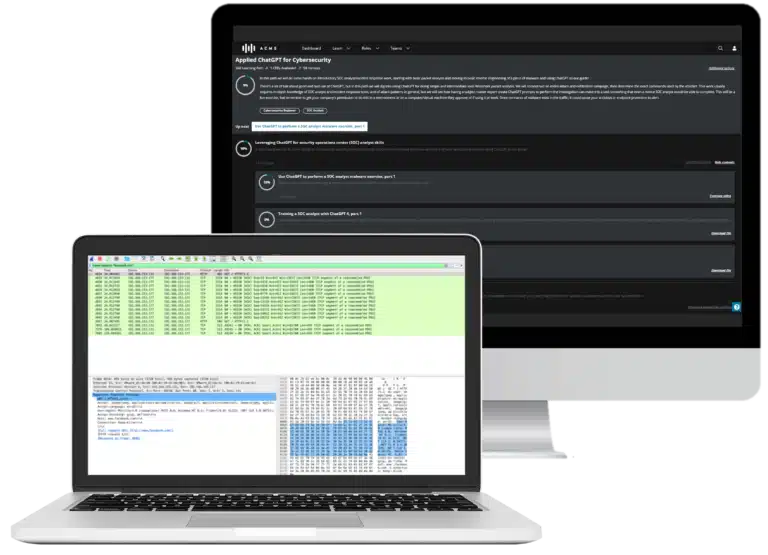SOC analyst resume tips [updated 2022]
Whether you’re looking to score your first entry-level job in a security operations center or advance to a senior role on an incident response team, it’s essential to have a well-crafted resume. Much as a movie poster generates interest for an upcoming film, your resume should capture a hiring manager’s interest and invite them to learn more. While the prospect of writing a security analyst resume may sound daunting, it doesn’t have to be. Following a few resume rules and best practices will go a long way toward marketing you as a competitive candidate for a job as a cybersecurity analyst.
How long should a cybersecurity analyst resume be?
Before you start drafting your cybersecurity resume, think about who your target audience is. Most resumes are read by recruiters, HR professionals or department managers. Their jobs are very different, but they have one thing in common: They’re all very busy. A study by HR Dive shows recruiters spend an average of only seven seconds reading each resume — seven seconds! That means resumes that are long, rambling, or packed full of information risk getting passed over. On the other hand, a resume that’s concise and well-organized is sure to catch a hiring manager’s eye. Resume length is important: for an entry-level role such as an IT support specialist, the “sweet spot” is one page. Mid-career professionals can add one page but no more than that.
You should also craft your resume with an eye for using the keywords in the job description. Because a security operations center (SOC) has many roles, and because titles like “SOC analyst,” “cybersecurity analyst,” and “information security analyst” are often used interchangeably, your skills and qualifications will likely carry across many like-named titles. Just make sure you put the correct ones in your resume!
Should your SOC analyst resume include technical skills?
The short answer is “Yes, absolutely!” Careers in cybersecurity are driven by technology and your resume should reflect that. Hiring managers like to see exactly what skills you possess and how they can connect those skills to their team’s needs. This is why it’s handy to truly study the job description. Any specific skills mentioned there should be reflected on your resume, whether in bullet points or a special section for cybersecurity resume skills. Be sure to take note of any skills the job description isn’t mentioning because those skills are probably irrelevant and can clutter your resume. For example, an employer reading an IT specialist resume is most likely not interested in your experience with Adobe Photoshop or Apple iMovie. Instead, devote that valuable resume space to skills and applications directly related to your target job.
Certifications and degrees
Certifications are a strong addition to your resume. In fact, 60 percent of cybersecurity positions require at least one certification, according to a Burning Glass cybersecurity hiring report.
Certifications tell employers that you’re skilled, hard-working and a lifelong learner. Security+ is a great tier 1 SOC analyst certification, but there are other security-analyst-related certifications that can help validate your knowledge and skills to hiring managers. If you have enough space, you may wish to include a brief description of each certification and highlight the skills related to your desired job. You should also include any degrees and formal education in this section. While there’s an ongoing debate in the cybersecurity world surrounding the value of higher education in the field, it certainly doesn’t hurt to showcase your academic achievements.
Involvement in the cybersecurity community
Many cybersecurity professionals participate in activities such as conferences, hackathons, blogging, volunteer coding and membership in professional organizations. All of these activities will help strengthen your IT specialist resume. For inexperienced candidates, community activities can validate skills you haven’t yet had a chance to prove in the field. Experienced candidates also benefit because community participation shows that cybersecurity is not just a job for you: it’s a passion and a way of life.
Omit any sensitive information
Now that we’ve covered what you should include on your SOC analyst resume, let’s discuss a few things you should leave off. You should omit sensitive information about your current and previous roles to avoid putting your employer at risk. Unfortunately, attackers will sometimes browse job descriptions, LinkedIn profiles and publicly posted resumes to glean details about an environment they’re targeting. They’re especially interested in what security applications and versions of security products the organization is using. Similarly, your government security clearance level can paint you as a spearfishing target. If you plan to include this information on your resume, be sure to include it only on a “private” copy of your resume that you share only with the employer.
Pay close attention to details
Before submitting your information security analyst resume, proofread it several times, with your own eyes and those of a trusted friend or colleague. Even small details like typos, improper punctuation and inconsistent spacing can land the resume you’ve worked so hard on in the discard pile. Seemingly minor details have a significant impact because the hiring manager views them as a way to gauge your attention to detail and ability to quickly identify potential problems, two extremely important skills for cybersecurity analysts to possess.
Getting your first information security job
For many cybersecurity professionals, an entry-level security analyst role was the gateway into the industry. If this is your first information security job, you may wonder what to put on your resume, especially if you’re light on employment history. Luckily, job seekers have a huge advantage in this sector because of the skills shortage. That means plenty of employers are willing to take on sharp, hard-working newbies and help them grow into new roles.
An employer hiring for an entry-level role will focus less on work experience and more on prior learning and motivation. You can demonstrate learning and motivation on your cybersecurity analyst resume by including certifications earned, courses taken, books read, conferences attended and other events you’ve participated in. You can also include non-technical skills such as customer service, teamwork and collaboration because those are all things you’ll use in your new role as a security analyst.
Time to apply!
Writing an information security analyst resume doesn’t have to be a daunting endeavor. Following the rules of thumb we outlined above will help you write a strong, competitive resume that you can leverage into a role as a security analyst. If you’d like additional guidance, you can check out cybersecurity resume samples and resume templates for ideas on how to format your resume and make it visually appealing.
Are there any resume tips or tricks you used to help you land your latest cybersecurit job? Let us know in the comments!
Sources:
- https://www.hrdive.com/news/eye-tracking-study-shows-recruiters-look-at-resumes-for-7-seconds/541582/, HR Dive
- https://cybersecurityguide.org/resources/cybersecurity-jobs/, Cybersecurity Guide
- https://www.cyberseek.org/pathway.html, Cyberseek
- https://www.monster.com/career-advice/article/sample-resume-information-security-specialist, Monster






